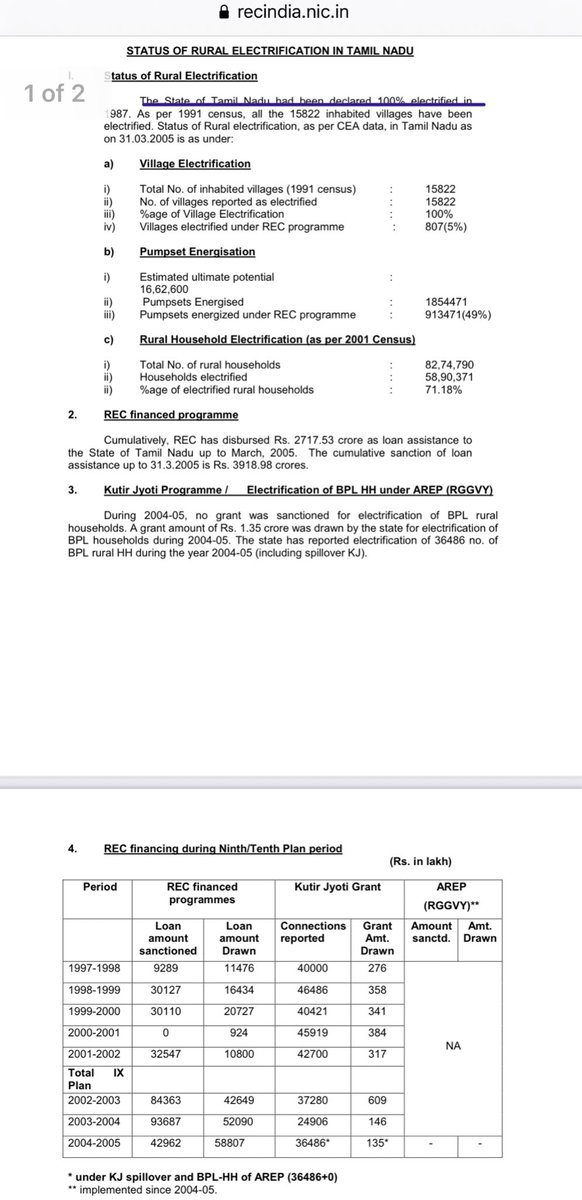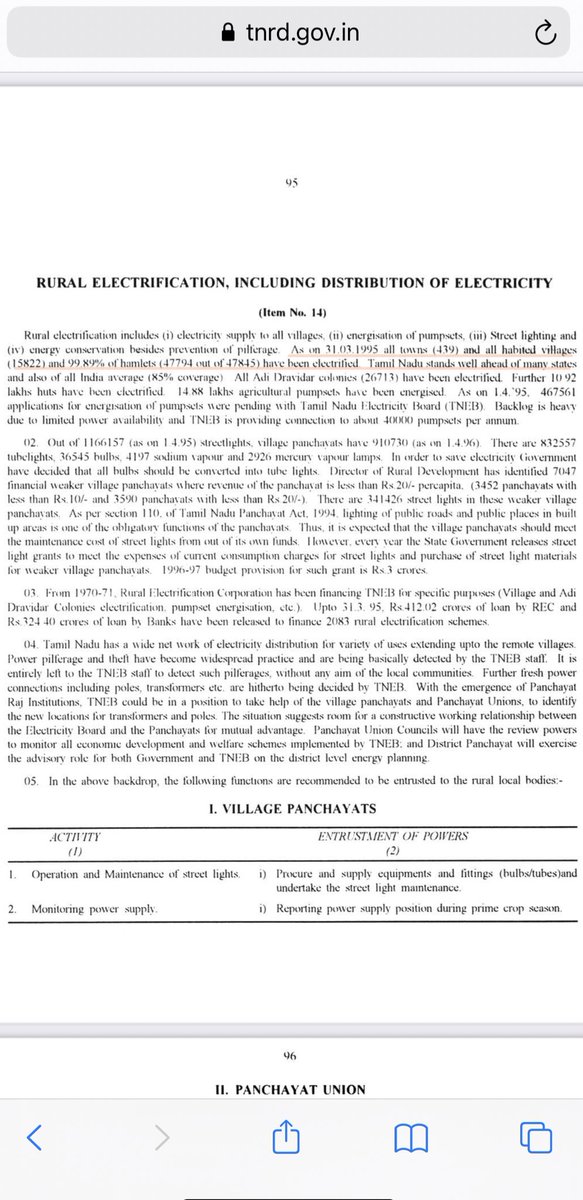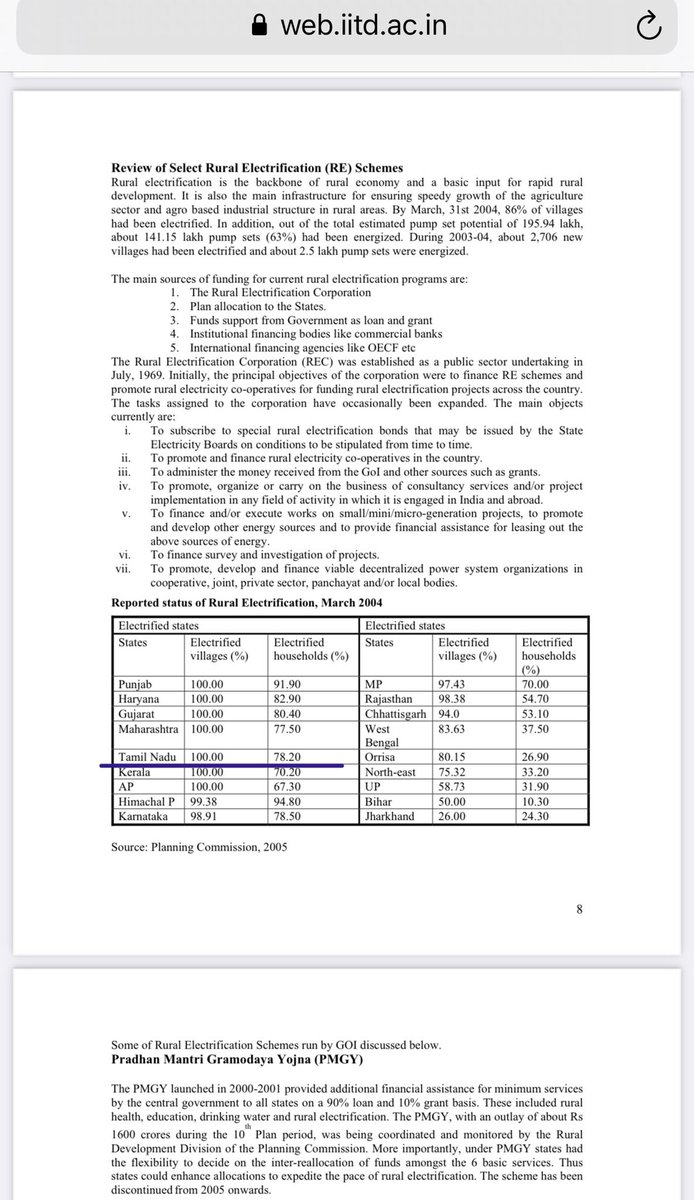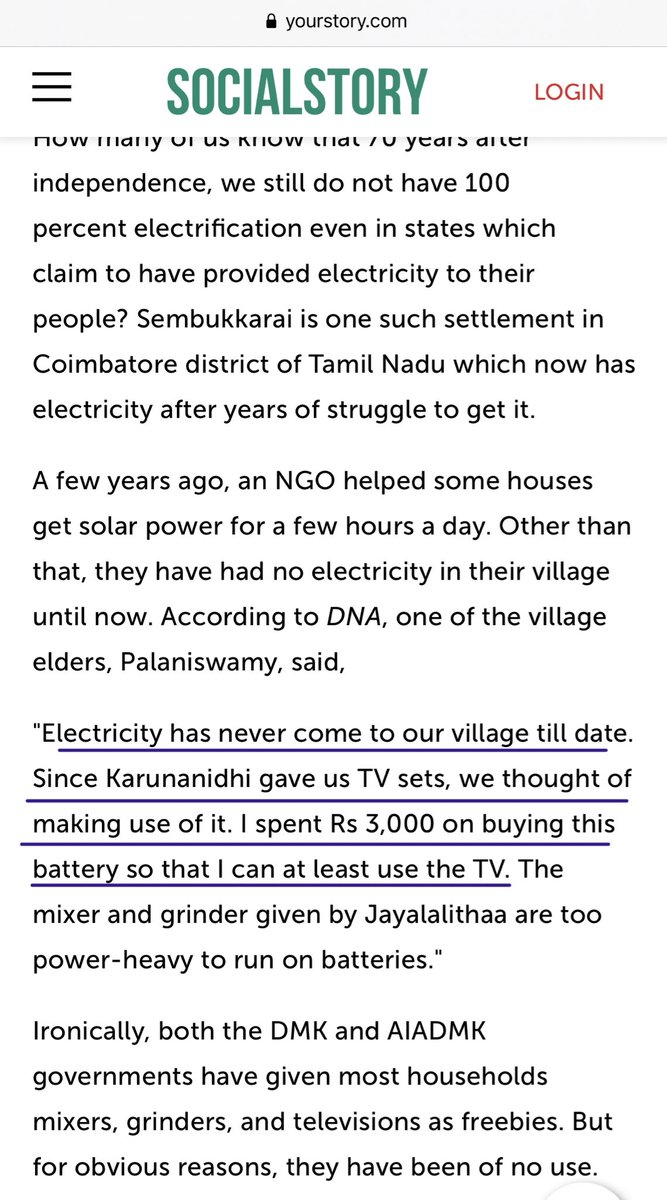
Rural Electrification was Karunanidhi’s success, claims A Raja. Tamil Nadu was one of the first states to achieve 100% Rural Electrification. No doubts about it. But was it DMK’s achievement?
Rural Electrification Corporation was formed by the Central government in 1969. And as per REC, 100% of Villages were electrified in 1987. And not 1975. But these do not cover Hamlets (குக்கிராமங்கள்) recindia.nic.in/download/TAMIL… 



During 1975-76 Rural electrification statistics, it was reported that 14,502 Villages (Including Hamlets) were electrified 8 before the survey was conducted. Means 14,502 Villages had received electricity before 1967. mospi.nic.in/sites/default/… 

As per TNRD, 47,794 out of 48,845 (99.89%) Hamlets were electrified by 31.03.1995. As per the Power ministry report in 2011, 115 Hamlets had not received electricity. 



As of March 2004, Only 78.2% Rural Households had power. Sembukkarai, a village in TN got TV from Karunanidhi but his village never got power till 2017.
web.iitd.ac.in/~pmvs/courses/…
yourstory.com/2017/06/sembuk…

web.iitd.ac.in/~pmvs/courses/…
yourstory.com/2017/06/sembuk…


After 2014, ₹922 Crores has been spent on Rural electrification and only in 2019, 100% households have been electrified. Starting from Kamarajar to EPS, everyone has contributed to rural electrification. Not only Karunanidhi.
ddugjy.gov.in/assets/uploads…
ddugjy.gov.in/assets/uploads…
8 years**
• • •
Missing some Tweet in this thread? You can try to
force a refresh





